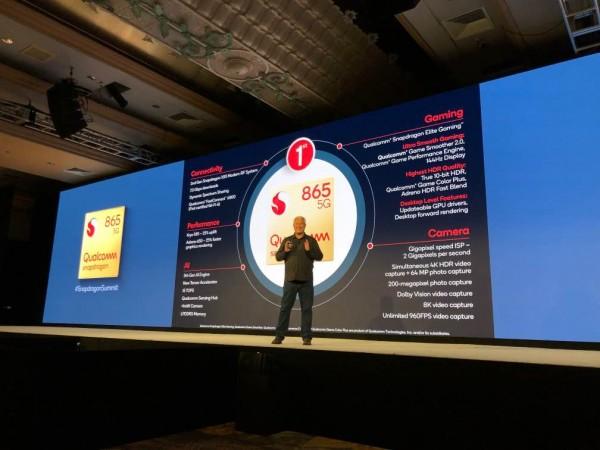
Qualcomm's Snapdragon Summit in Hawaii is full of exciting announcements. From launching the latest flagship chipset to bringing 5G connectivity and more, Qualcomm is making future smartphones better in many ways. The Snapdragon 865 chipset surely grabbed a lot of attention at the summit and here's what it means for end consumers.
Qualcomm Snapdragon chips power a large group of flagship smartphones from brands like OnePlus, Xiaomi, Samsung and other relying on the chipset maker for their best phones. The Snapdragon 865 chipset brings better performance, graphics and power efficiency to make sure the next year flagships are at their peak.
How Snapdragon 865 makes 2020 flagship better?
Qualcomm Snapdragon 855 already proved its capabilities by powering some of the best-performing smartphones in 2019. The Snapdragon 865 aims to improve that in more ways than one can imagine. Here's a look at what Snapdragon 865 chipset brings to the table from a consumer point of view.
Qualcomm Snapdragon 865 chipset offers:
- 25 percent better CPU performance
- 20 percent faster graphics performance with Adreno 650 GPU
- 25 percent better power efficiency
Qualcomm Snapdragon 865 improvements are achieved through ARM Cortex-A77 performance cores, which are upgraded from A76 in SD855. The clock speeds and configuration of the Snapdragon 865 remain unchanged from its predecessor as the Prime core clocks up to 2.84GHz, 2x Performance cores clock up to 2.4GHz and 4x Kryo 285 Efficiency cores clock up to 1.8GHz.
What should really matter to consumers is that the Adreno 650 GPU has some neat tricks up its sleeve. It supports QHD+ screens at 144Hz refresh rates or UHD at 60Hz. The cameras, which have become a core function of premium smartphones, get a major upgrade with Spectra 480 ISP, which supports up to 200MP for the main camera, or 64MP camera with zero shutter lag.

So far, we've seen 108MP cameras in action. Qualcomm's new chipset could change that by allowing OEMs to really push to limits on the megapixel race. The chipset also supports 25MP dual cameras with 4K HDR recording at 60fps or 4K at 120fps or 8K at 30fps. The previous chipset allowed 4K HDR at 60fps, so the Snapdragon 865 really makes a huge jump. If you're a fan of those dramatic slow-mo videos, OEMs can leverage the chipset's capability to support up to 720p at 960fps without any time limit.
While the 5G word has been the talking point of most tech summits, Qualcomm makes it possible in the Snapdragon 865. The X55 modem is a part of the new chipset, which can deliver both 4G and 5G connectivity by delivering maximum download speed of 7.5Gbps on 5G and 2.5Gbps on 4G. Of course, these are theoretical values and the real-world speeds might differ.

Qualcomm is also addressing the needs of serious mobile gamers with its "Snapdragon Elite Gaming" feature, which was launched with Snapdragon 855. This supports five main features Desktop Forward Rendering, Game Color Plus, updatable GPU drivers, Snapdragon Game Performance Engine, and Adreno HDR Fast Blend, for realistic, smooth and clear gaming experience.
With all this performance strain, Qualcomm promises extension of battery life cycles with the help of Quick Charge AI. There's no bump in charging speed as it still supports up to 27W fast charging with Quick Charge 4+, the new AI feature ensures you won't need to swap batteries often or upgrade your phone due to battery woes.
In the end, everything comes down to how OEMs leverage the chipset's capabilities. We have to wait for the commercial products to start shipping early next year to see if Snapdragon 865 has an edge over Huawei's HiSilicon Kirin 990, Apple's A13 Bionic or Samsung's Exynos 990.

















